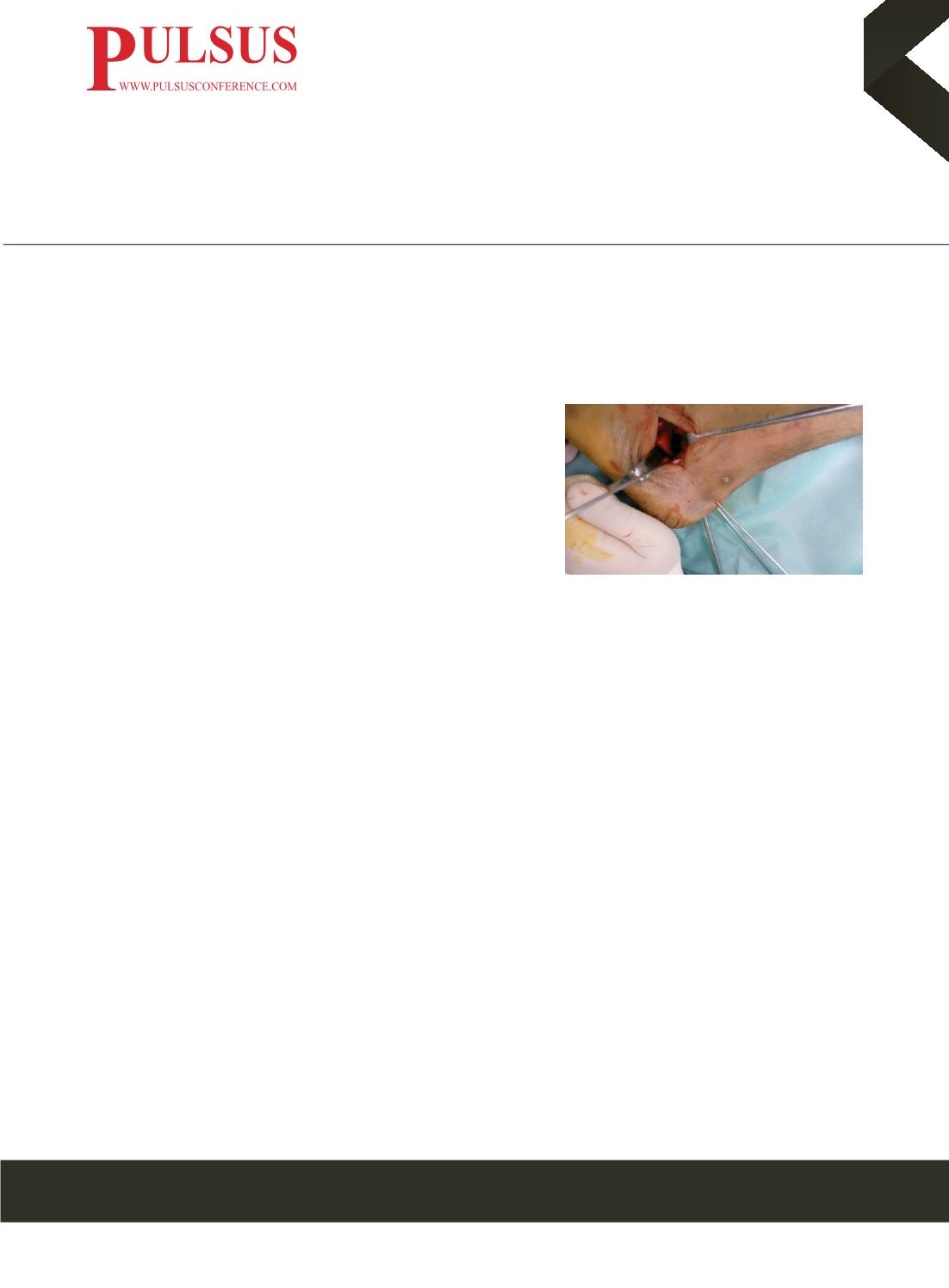

Page 27
November 13-14, 2019 | London, UK
ORTHOPEDICS, OSTEOPOROSIS & TRAUMA
12
th
International Conference on
Journal of Orthopaedics Trauma Surgery and
Related Research
Orthopedics 2019
November 13-14, 2019
J Orthop Trauma Surg Rel Res, Volume 14
Volume: 14 | ISSN: 1897-2276
Less invasive techniques in management of intra-articular calcaneus fractures
Mohammed Al-Ahmady Abd El-Reheem Ali
Zagazig University, Egypt
I
ntra-articular calcaneal fractures are commonly occurred after high-energy
trauma. A variety of techniques exists for anatomic reduction and surgical
fixation. The optimal management of displaced intra-articular calcaneus
fractures is controversial and represents a topic of sustained interest and
research for the past two decades.
Open Reduction and Internal Fixation (ORIF) via an extensible L-shaped
approach has gained many soft tissue complications.
These complications include deep and superficial infections and wound
sloughs, which reportedly occur in 1.8% to 27% of patients. This high
frequency of infection is likely attributed to thin soft-tissue envelope around the calcaneus especially the lateral wall, which is
exposed for surgery.
Recently, less invasive surgical techniques for treating displaced intra-articular calcaneus fractures have been undertaken in an
attempt to reduce complication rates and promising clinical and radiographic outcomes. These recent techniques include limited-
incision sinus tarsi ORIF, percutaneous stabilization with pins and /or screws, and Minimally Invasive Plate Osteosynthesis
(MIPO).
Objectives
: The purpose of our study is to improve functional outcome in patients with intraarticular calcaneus fractures.
Methods
: This study was done in Zagazig University Hospitals, Egypt on 36 patients with displaced intraarticular calcaneal
fractures including displaced Essex-Lopresti fractures, Sanders type II fractures, Sanders type III fractures in patients with
multiple co morbidities.
Results & Discussion:
Results
: Collected data will be presented in tables and suitable graphs and analyzed by computer software (SPSS version 19)
using appropriate statistical methods.
Discussion done on results compared to related relevant literatures and specific researches to explain the reasons for getting such
results.
Conclusion
: Less invasive surgical techniques for treating displaced calcaneus fractures are very effective and smart procedures
to reduce complications and improve recovery when surgery is indicated.
Biography
Mohammed Alahmady Abdel-Reheem Ali, MBBCH, MSc, is an Assistant Lecturer of Orthopaedic Surgery, Faculty of Medicine in
Zagazig University, Egypt.
Dr_ma2020@yahoo.com















